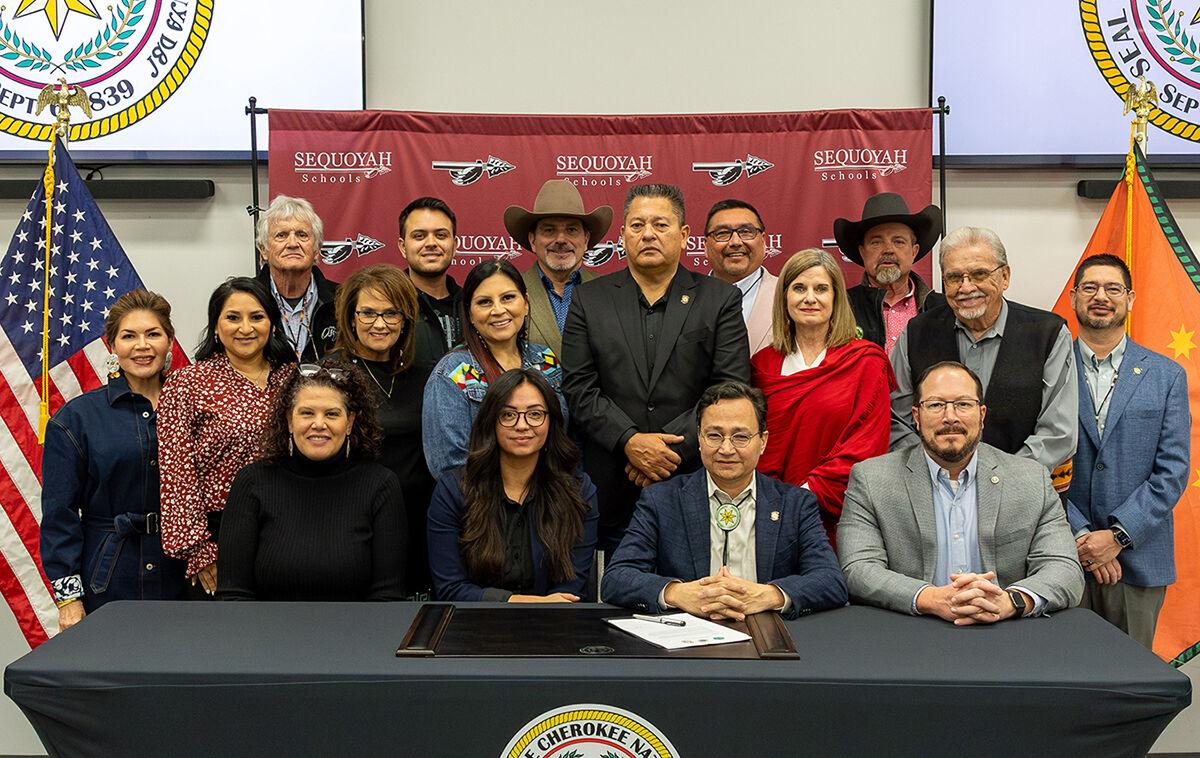
- Details
- By Chuck Hoskin Jr
Guest Opinion. For Cherokees, agriculture has always been more than another industry. Producing our own food is not only a means of sustenance for our people; it is a cornerstone of our self-determination and cultural preservation. Now, a groundbreaking investment in Sequoyah High School’s agriculture education program will help convey that dedication to the next generation of Cherokees.
For the first time in recent history, agriculture education will be available and accessible to SHS students. Through Cherokee Nation and Sequoyah’s partnership with the Bureau of Indian Education, the Native American Agriculture Fund and the Tribal Agriculture Fellowship, the program will provide hands-on learning opportunities in livestock handling, crop education, farming, ranching, and food sustainability.
Today, SHS enrolls close to 400 Cherokee and other Native students. This initiative sets the foundation for any of these students interested in careers in the ever-expanding agribusiness industry. We are excited for its potential to empower tribal youth, grow northeast Oklahoma, and strengthen Cherokee Nation’s land stewardship and food sovereignty.

For rural Oklahoma, teaching modern agriculture principles is a crucial economic and workforce development strategy. We know agriculture remains the backbone of so many of our rural communities. Cherokee Nation will work to ensure that Native youth have the skills and opportunities to pursue these careers while staying close to home.
Going forward, we plan to hire a full-time agriculture teacher, establish a local school garden, and integrate farm-to-table ideas into the school cafeteria. With school administrators committed to the program’s success, we can also reinforce traditional Cherokee values and give a generation of students more diverse opportunities to succeed.
The effort complements a larger investment we made this past year into education. The $65 million Sequoyah Schools Capital Plan is the largest capital investment in the 153-year history of the school and will dramatically enhance campus facilities. Together, these investments ensure that Sequoyah continues to set the standard for education excellence across Indian Country.
With the support of partners like NAAF and the BIE, we can develop a new generation of Native agricultural stewards and provide them with state-of-the-art facilities to learn and grow. More than ever, the Cherokee Nation is empowering our citizens to protect natural resources, receive a quality education, and grow a brighter future.
Chuck Hoskin, Jr. is the principal chief of the Cherokee Nation.
More Stories Like This
Governor Stitt, it’s raining. Save SNAP.Remembering My Grandma During Native American Heritage Month
HHS Secretary Kennedy to Indian Country: Even During a Shutdown, Your Health Care is My Priority
Finding the Good News: MacKenzie Scott’s Quiet Commitment Amidst the Noise
Martial Law in an American City —1929
Help us tell the stories that could save Native languages and food traditions
At a critical moment for Indian Country, Native News Online is embarking on our most ambitious reporting project yet: "Cultivating Culture," a three-year investigation into two forces shaping Native community survival—food sovereignty and language revitalization.
The devastating impact of COVID-19 accelerated the loss of Native elders and with them, irreplaceable cultural knowledge. Yet across tribal communities, innovative leaders are fighting back, reclaiming traditional food systems and breathing new life into Native languages. These aren't just cultural preservation efforts—they're powerful pathways to community health, healing, and resilience.
Our dedicated reporting team will spend three years documenting these stories through on-the-ground reporting in 18 tribal communities, producing over 200 in-depth stories, 18 podcast episodes, and multimedia content that amplifies Indigenous voices. We'll show policymakers, funders, and allies how cultural restoration directly impacts physical and mental wellness while celebrating successful models of sovereignty and self-determination.
This isn't corporate media parachuting into Indian Country for a quick story. This is sustained, relationship-based journalism by Native reporters who understand these communities. It's "Warrior Journalism"—fearless reporting that serves the 5.5 million readers who depend on us for news that mainstream media often ignores.
We need your help right now. While we've secured partial funding, we're still $450,000 short of our three-year budget. Our immediate goal is $25,000 this month to keep this critical work moving forward—funding reporter salaries, travel to remote communities, photography, and the deep reporting these stories deserve.
Every dollar directly supports Indigenous journalists telling Indigenous stories. Whether it's $5 or $50, your contribution ensures these vital narratives of resilience, innovation, and hope don't disappear into silence.
 The stakes couldn't be higher. Native languages are being lost at an alarming rate. Food insecurity plagues many tribal communities. But solutions are emerging, and these stories need to be told.
The stakes couldn't be higher. Native languages are being lost at an alarming rate. Food insecurity plagues many tribal communities. But solutions are emerging, and these stories need to be told.
Support independent Native journalism. Fund the stories that matter.
Levi Rickert (Potawatomi), Editor & Publisher
